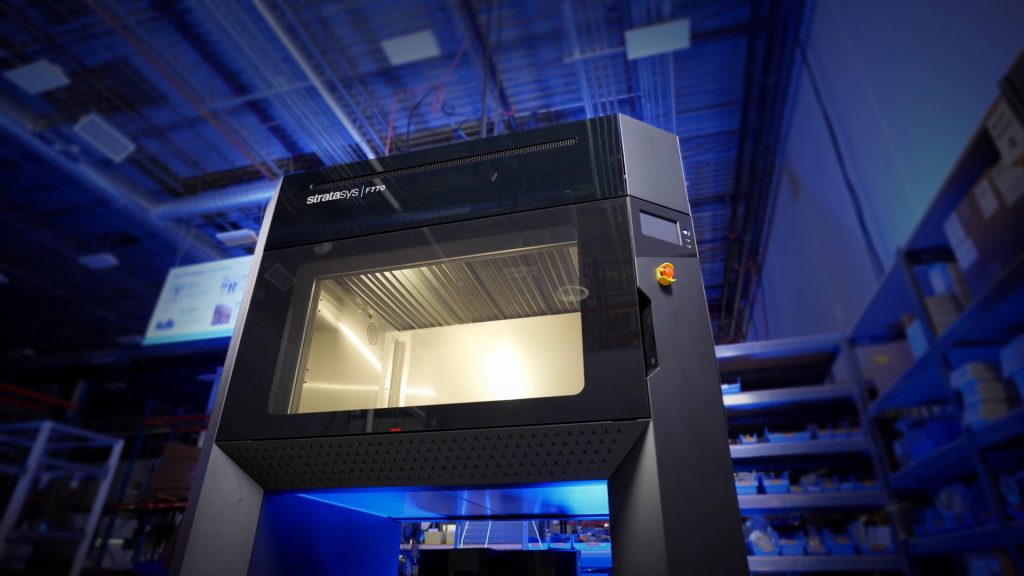3D printer manufacturerStratasys(SSYS) has filed a shareholder Rights Plan with theUS Securities and Exchange Commission(SEC). Speaking to 3D Printing Industry Stratasys CCO Yonah Lloyd , said, “The limited duration Rights Plan, which is similar to those adopted by many other publicly-traded companies, was a prudent decision by the board, and adopting it is intended to protect the long-term interests of the company and all Stratasys shareholders.”
The filing followsNano Dimension’s purchase of a 12.1% stake in Stratasys, using some of the$1.5 billion in cash from multiple investment rounds.
Stratasys’ Rights Plan gives shareholders the right to buy further shares in the firm for $0.01 in proportion to their current holdings for each one bought by any ‘acquiring person’ that owns 15% or more of the company. Coming into force onAugust 4, 2022, the plan is a poison pill tactic used by firms to discourage hostile takeover attempts. In effect, diluting an unwanted takeover approach.
When asked by 3D Printing Industry whether Stratasys’ poison pill has been introduced specifically to discourage a Nano Dimension takeover bid, the firm’s CCO Yonah Lloyd refused to confirm if this was the case stating, “We’re not going to speculate on a hypothetical.”
“The Plan is designed to reduce the likelihood that any entity, person or group would gain control of, or significant influence over, Stratasys through the open-market accumulation of the company’s shares without appropriately compensating all Stratasys shareholders for control,” he added.

What is a poison pill
The Rights Plan, which is set to expire on July 24, 2023, is often called a poison pill in financial circles. A high-profile use of this strategy was most recently evident in Elon Musk’s bid for Twitter when the Twitter board approved a Rights Plan allowing shareholders to buy stock at a 50% discount.
Poison Pills are deliberately structured to prevent unwanted takeovers, as they allow existing shareholders to purchase additional shares at a heavy discount. In doing so, rights plans significantly reduce the ownership that hostile parties can acquire, making takeovers less lucrative.
The flip-in-Poison Pill is one tactic employed by the targeted company to deter or stop the possibility of a hostile bid. This strategy allows shareholders who are already in the company, but not the acquiring shareholders, to buy additional shares at a reduced price – in this case $0.01.
Inundating the market with new shares reduces the value of shares that have already been purchased by the purchasing company, decreasing its percentage of ownership. This makes it more expensive and difficult for the purchaser to get control.
Martin Lipton, a renowned takeover attorney and Co-founder ofWachtell Lipton Rosen & Katzintroduced the strategy in 1982.

Preventing a Nano Dimension takeover?
Stratasys公司”申请后不到一个星期Nano Dimension announced the acquisition of 12.12% of its shares. A takeover of Stratasys can be seen as a continuation of Nano Dimension’s new strategy – acquiring enterprises throughout the 3D printing industry.
Nano Dimension has always been ahead of the curve in structuring its financing arrangements. In 2014,Nano Dimension used a reverse merger to go public, a move way before the 2021trend towards 3D printing SPAC mergers.
Since then Nano Dimension hasraised over $1.5 billion from investors. Yet the firmgenerated just $1.6 million in H1 2021from selling itsDragonFly 3D printers.
The acquisition strategy has seen Nano Dimensionbuy DeepCube for $70 millionandacquire Nanofabrica for over $50 million. Building on these deals, which have provided it with wider AI and microprinting capabilities, the firm has alsopurchased Global Inkjet Systems for $18.1 millionas well asAdmatec and Formatec for $12.9 million, but its move on Stratasys has taken things to another level.
Stratasys current market cap is $1.32 billion compared to Nano Dimension’s $853 million. While Stratasys most recent full-year revenue was $607 million, Nano Dimension reported $10.5 million.
Stratasys also continues to expand its own portfolio,adding SAF, P3, and SLA 3D printingto its lineup via the acquisitions of Xaar 3D,起源andRPS, paving the way for it to achieve further sales growth in future.
As a listed entity Stratasys has its hands tied when commenting on speculation, however, the poison pill is a clear signal that the company wants to call the shots on any takeover.
Nano Dimension had not responded to a request for comment at time of publication.
To stay up to date with the latest 3D printing news, don’t forget to subscribe to the3D Printing Industry newsletteror follow us onTwitteror liking our page onFacebook.
For a deeper dive into additive manufacturing, you can now subscribe to ourYoutubechannel, featuring discussion, debriefs, and shots of 3D printing in-action.
Are you looking for a job in the additive manufacturing industry? Visit3D Printing Jobsfor a selection of roles in the industry.
Featured image shows the Stratasys F770 3D printer. Image via Stratasys.



